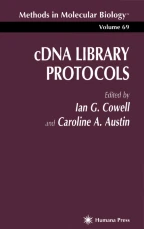
Transformation of Escherichia coli was first described by Mandel and Higa (1), who reported that E. coli cells, after treatment with calcium chloride, can take up bacteriophage λ DNA and produce viable phage particles. The conditions for the transfer of exogenous DNA into E. coli have been examined in detail in studies of bacteriophage transfection, genetic transformation, and plasmid transformation. Modifications that improve the efficiency of transformation include prolonged exposure of cells to CaCl2 (2), substitution of Ca 2+ ions by other cations, such as Rb + (3), Mn 2+ , and K + , and addition of other compounds, such as dimethyl sulfoxide (DMSO), dithiothreitol, and cobalt hexaminechloride (4).
This is a preview of subscription content, log in via an institution to check access.